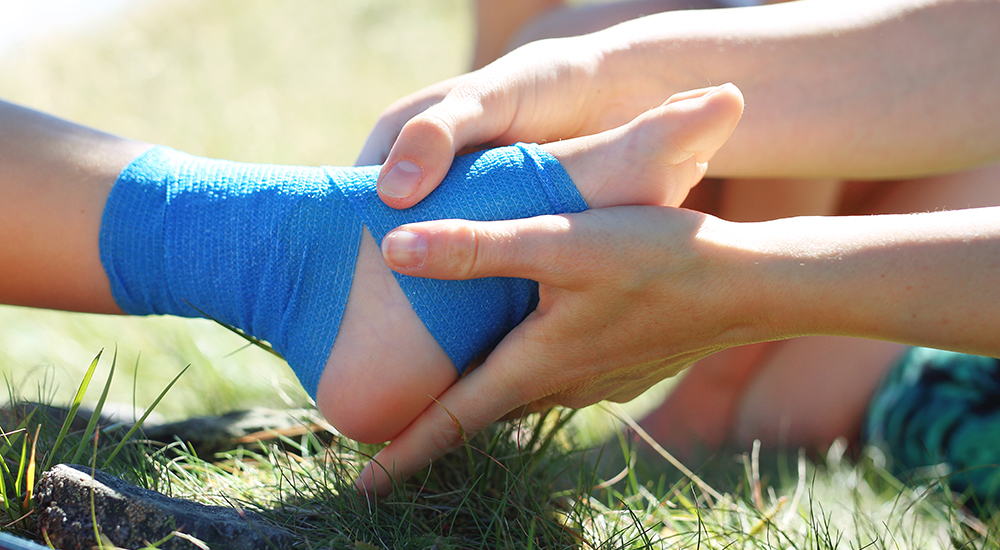SPORTS INJURIES
Symptoms
Pain, swelling, stiffness or the ankle collapsing are the common problems that can persist, even months after an injury. Proper assessment at the time of injury minimises the risk of problems later on. X-rays and Physio treatment are important at an early stage. Where recovery is incomplete an expert assessment will reveal whether there is an undiagnosed fracture, damage to the surface of the ankle bone, tendon problems or chronic loosening of the tendons. Most of these conditions can be improved on once a proper diagnosis is reached.
Treatment
Enough of the right sort of physiotherapy helps many patients where recovery is slow. A proper ankle support brace may facilitate a return to sport. Where surgery is required it is usually with keyhole variety, and with very worthwhile results.
Symptoms
Ruptured Achilles tendon is a condition that usually affects people in their mid-thirties/forties. It is particularly prevalent in sports people, both unconditioned and elite athletes. The rupture usually occurs during activity without warning. A loud snap may be heard. People can still walk and move the ankle, which may confuse A&E staff.
Treatment
Treatment is either with a plaster and crutches or with an operation. The benefits of an operation include a lower rate of re-rupture and the opportunity to re-tension the tendon. However, patients need to consider the risks involved with surgery. Any delay in diagnosis or casting may mean that an operation is required, rather than optional, so prompt and expert assessment is recommended.
Symptoms
The large Achilles’ tendon, at the back of your heel, can tear suddenly or become painful, stiff and swollen. Usually this is just above the heel bone, but where the tendon joins the bone it can also be painful. Patients often feel “30 years older than their years” when first walking in the morning or after prolonged rest.
Treatment
Most patients with a grumbling Achilles complaint are helped by the right sort of Physio stretches, called Eccentric Loading. Stubborn cases (more than a few months) require careful assessment, often an ultrasound or MRI scan and then the right form of therapy can be selected. Injection prolotherapy, Shockwave and high volume injections are all available through our unique One Stop Heel Pain Clinic where we offer assessment, scan and (often) treatment all in one visit.
Symptoms
Through wear and tear or repeated sprains, the tendons passing behind the outside of the ankle and heel can split, fray or slip. This causes pain, swelling and difficulty walking. Increasing sporting activities or training can cause the condition.
Treatment
Treatment options include modifying or reducing sports, physiotherapy. Sometime surgery to tidy up (debridement) the damage is needed. The tendons run in a tunnel and are held there by the retinaculum, which is like a seatbelt holding them in place. If the “seatbelt” has been damaged then the tendons may pop out from behind the bone or click, by dislocating. An operation is usually advised to repair this. After surgery the ankle is placed in a plaster cast for 6 weeks before physiotherapy is commenced.
Symptoms
Inflammation of the fibres attaching muscles to the edge of bones in the leg can cause pain along the shin. We often diagnose this condition without tests, however, scans may prove useful. The condition is related to athletic activity and may be brought on by a sudden change in shoes or training regime.
Treatment
Treatment options include rest and avoiding sporting activity and physiotherapy. During our assessment, we also typically check for chronic compartment syndrome and stress fractures.


